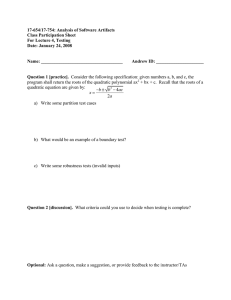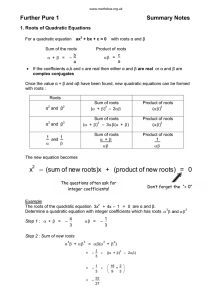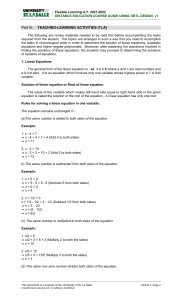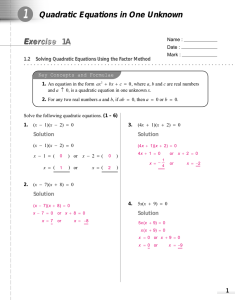Lesson 39 Sections 7.6 and 8.1
advertisement
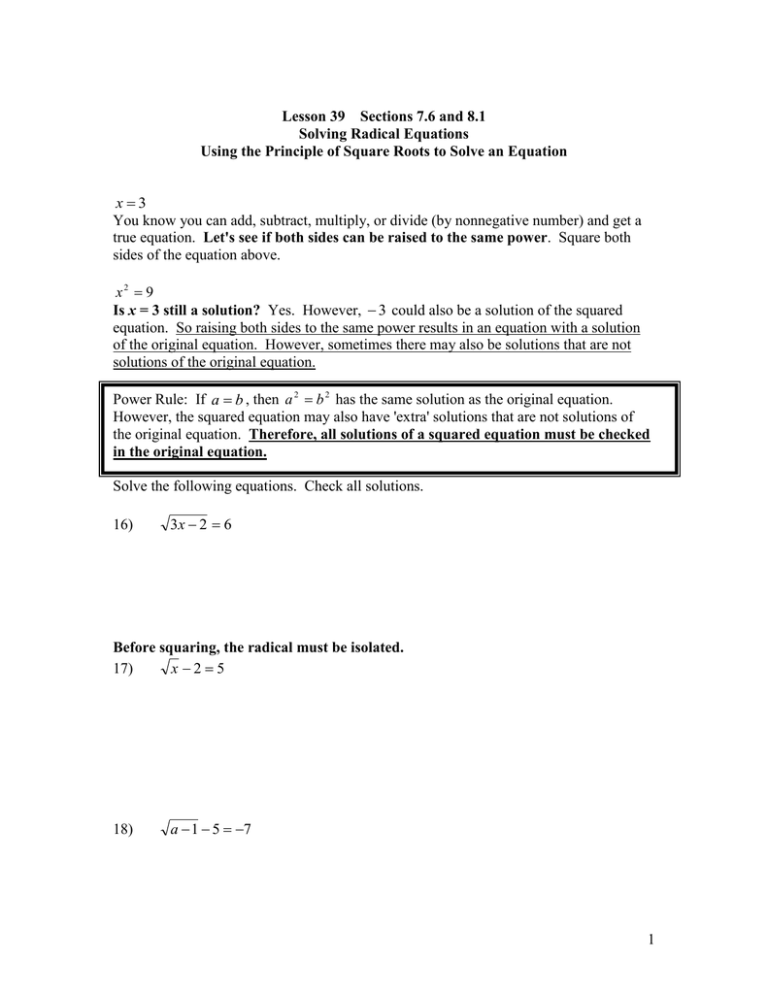
Lesson 39 Sections 7.6 and 8.1 Solving Radical Equations Using the Principle of Square Roots to Solve an Equation x3 You know you can add, subtract, multiply, or divide (by nonnegative number) and get a true equation. Let's see if both sides can be raised to the same power. Square both sides of the equation above. x2 9 Is x = 3 still a solution? Yes. However, 3 could also be a solution of the squared equation. So raising both sides to the same power results in an equation with a solution of the original equation. However, sometimes there may also be solutions that are not solutions of the original equation. Power Rule: If a b , then a 2 b 2 has the same solution as the original equation. However, the squared equation may also have 'extra' solutions that are not solutions of the original equation. Therefore, all solutions of a squared equation must be checked in the original equation. Solve the following equations. Check all solutions. 16) 3x 2 6 Before squaring, the radical must be isolated. x 25 17) 18) a 1 5 7 1 19) x 2 7 4 20) 2x 1 1 2 21) 4 x 13 x 2 A Quadratic Equation is any equation that can be written in the form ax 2 bx c 0 . You have already learned one way to solve a quadratic equation, using factoring as in the following example. 3x 2 2 5 x 3x 2 5 x 2 0 (3 x 1)( x 2) 0 3x 1 0 3 x 1 x or x2 0 x2 1 3 2 You will now learn another way to solve a quadratic equation. In lesson 40, you will learn a third way to solve quadratic equations. Using the Principle of Square Roots Principle of Square Roots: For any real number k, if x 2 k then x k or x k . Use the principle of square roots to solve these two quadratic equations. 1) x2 9 2) 3y 2 2 0 The principle of square roots can be generalized. Q = a quantity If Q 2 k then Q k or Q k 3) ( x 3) 2 36 4) (n 2) 2 12 5) If f ( x) (2 x 1) 2 , find any values of x such that f ( x) 11 . 3

